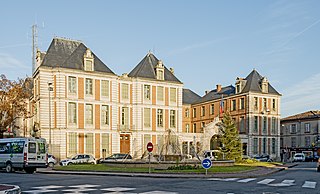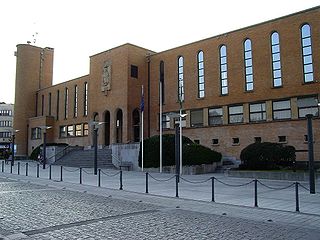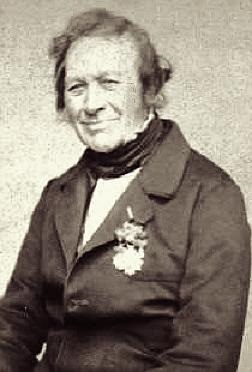
Toulouse is the prefecture of the French department of Haute-Garonne and of the larger region of Occitania. The city is on the banks of the River Garonne, 150 kilometres from the Mediterranean Sea, 230 km (143 mi) from the Atlantic Ocean and 680 km (420 mi) from Paris. It is the fourth-largest city in France after Paris, Marseille and Lyon, with 504,078 inhabitants within its municipal boundaries (2021); its metropolitan area has a population of 1.5 million inhabitants (2021). Toulouse is the central city of one of the 22 metropolitan councils of France. Between the 2014 and 2020 censuses, its metropolitan area was the third fastest growing among metropolitan areas larger than 500,000 inhabitants in France.

Tarn-et-Garonne is a department in the Occitania region in Southern France. It is traversed by the rivers Tarn and Garonne, from which it takes its name. The area was originally part of the former provinces of Quercy and Languedoc. The department was created in 1808 under Napoleon, with territory taken from the neighbouring Lot, Haute-Garonne, Lot-et-Garonne, Gers and Aveyron departments.

Haute-Garonne is a department in the southwestern French region of Occitanie. Named after the river Garonne, which flows through the department. Its prefecture and main city is Toulouse, the country's fourth-largest. In 2019, it had a population of 1,400,039.

Evere is one of the 19 municipalities of the Brussels-Capital Region (Belgium). As of 1 January 2022, the municipality had a population of 43,608 inhabitants. The total area is 5.08 km2 (1.96 sq mi), which gives a population density of 8,503/km2 (22,020/sq mi). In common with all of Brussels' municipalities, it is legally bilingual (French–Dutch).
The Moulin de la Galette is a windmill and associated businesses situated near the top of the district of Montmartre in Paris. Since the 17th century the windmill has been known for more than just its milling capabilities. Nineteenth-century owners and millers, the Debray family, made a brown bread galette, which became popular and was adopted as the name of the windmill and its businesses, which have included a famous guinguette and restaurant. In the 19th century, Le Moulin de la Galette represented diversion for Parisians seeking entertainment, a glass of wine and bread made from flour ground by the windmill. Artists such as Renoir, van Gogh, Ramón Casas and Pissarro have immortalized Le Moulin de la Galette, probably the most famous example being Renoir's festive painting, Bal du moulin de la Galette.

The Bazacle is a structure in and on the banks of the River Garonne in the French city of Toulouse.

Henri Owen Tudor was a Luxembourg engineer, inventor, and industrialist. He developed the first commercially usable lead-acid battery.

The Canal de Garonne, formerly known as Canal latéral à la Garonne, is a French canal dating from the mid-19th century that connects Toulouse to Castets-en-Dorthe. The remainder of the route to Bordeaux uses the river Garonne. It is the continuation of the Canal du Midi which connects the Mediterranean with Toulouse.

Saint-Martory is a commune in the Haute-Garonne department in southwestern France. It is part of the ancient region known as the Comminges. Saint-Martory station has rail connections to Toulouse, Pau and Tarbes.

Montricoux is a commune in the Tarn-et-Garonne department in the Occitanie region in southern France. It is located along the banks of the Aveyron, between Nègrepelisse and Bruniquel. The written history of the commune dates back to the eighth century. The Château de Montricoux, built by the Knights Templar, now houses the Marcel-Lenoir Museum, which preserves 130 drawings, pastels, watercolors, oils, and frescoes by this artist, a resident of the town.
The Compagnie du Kasai was a Belgian company established to exploit the resources of the Kasai River basin in the Congo Free State. At first it was mainly involved in harvesting wild rubber, but later moved into palm oil and mining.

The Ponts Jumeaux is the point at which the Canal du Midi joins the Canal de Garonne and the River Garonne, via the Canal de Brienne. It was built in 1774 by Joseph-Marie de Saget, a civil engineer in the province of Languedoc in Toulouse.

The Château de Pompignan is a mid-18th-century château standing on a terrace above the village of Pompignan, Tarn-et-Garonne, which lies on the old Paris road, about 25 km north-west of Toulouse, France.
Dom Joseph Vaissète was a scholarly French Benedictine monk who wrote a history of Languedoc and a geography of the world as it was known in his day. Vaissette's Histoire générale de Languedoc is still considered a work of great erudition and value by modern historians. The Geography had its faults from lack of technology, but was the most detailed and accurate of its day. Some names for the volume differ from modern usage. Because of this, he gives the name La Côte des Dents to what is now the Côte d'Ivoire.

In the industrial sector, the Luxembourg steel industry continues to occupy the first place in the country, even after the industrial reforms which have taken place since the 1960s.

Louis Charles André Alexandre Du Mège or Dumège,, was a French scholar, archaeologist and historian.

The Saut-du-Tarn Steel Works was a steel maker in Saint-Juéry, Tarn, France. It originated with Léon Talabot et Compagnie, founded by Léon Talabot in 1824. The factory specialized in manufacturing steel handtools such as files, scythes and sickles, but later moving into manufacture of machine tools. It closed in 1983 and was liquidated in 1984. Several successor companies acquired some of the facilities and continue to operate.

The Société des mines et fonderies de Pontgibaud was a French silver and lead mining and smelting company based in Pontgibaud, Puy-de-Dôme. It mined lead-silver ore deposits that had been exploited since Roman times. Later it opened another factory in Couëron in the Loire estuary, and then closed down the Pontgibaud mines and foundry. The Pontgibaud factory in Couëron diversified into other non-ferrous metal products using imported ore. After being sold and resold it finally closed in 1988.

The Compagnie française des métaux (CFM) was a French metallurgy company founded in 1892 that acquired the assets of a predecessor that had gone into liquidation. The company operated a number of plants in different locations in France, mainly making copper and aluminum products. In 1962 it was merged with Tréfileries et Laminoirs du Havre to form Tréfimétaux.
Joseph Abeille was a French hydraulic and structural engineer. After 1730 he also worked as a municipal architect.

















